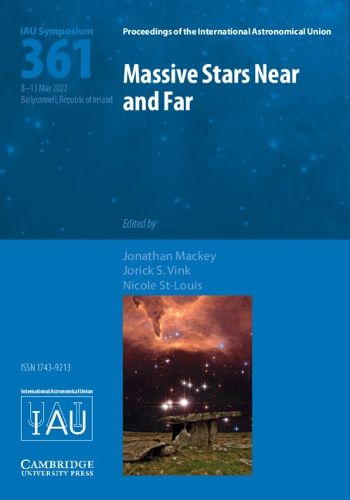Readings Newsletter
Become a Readings Member to make your shopping experience even easier.
Sign in or sign up for free!
You’re not far away from qualifying for FREE standard shipping within Australia
You’ve qualified for FREE standard shipping within Australia
The cart is loading…






IAU Symposium 361 brought together observational and theoretical astrophysicists to discuss all aspects of massive stars: their formation, evolution, demise as supernovae and GRBs, and gravitational waves from mergers of stellar-remnant neutron stars and black holes. The special focus was on massive stars in the early Universe, how they compare with massive stars in our Galaxy and with low-metallicity galaxies in the local Universe, anticipating new results from HST's ULLYSES and JWST. The volume includes contributions from the virtual preview meeting (May 2021) held online due to COVID-19 restrictions, and the in-person meeting (May 2022) held in Ballyconnell, Co. Cavan, Ireland. More than 200 participants from 32 countries contributed through highlight talks on exciting new results and wide-ranging contributed talks and posters covering the latest research from cool supergiants to hot Wolf-Rayet stars.
$9.00 standard shipping within Australia
FREE standard shipping within Australia for orders over $100.00
Express & International shipping calculated at checkout
IAU Symposium 361 brought together observational and theoretical astrophysicists to discuss all aspects of massive stars: their formation, evolution, demise as supernovae and GRBs, and gravitational waves from mergers of stellar-remnant neutron stars and black holes. The special focus was on massive stars in the early Universe, how they compare with massive stars in our Galaxy and with low-metallicity galaxies in the local Universe, anticipating new results from HST's ULLYSES and JWST. The volume includes contributions from the virtual preview meeting (May 2021) held online due to COVID-19 restrictions, and the in-person meeting (May 2022) held in Ballyconnell, Co. Cavan, Ireland. More than 200 participants from 32 countries contributed through highlight talks on exciting new results and wide-ranging contributed talks and posters covering the latest research from cool supergiants to hot Wolf-Rayet stars.